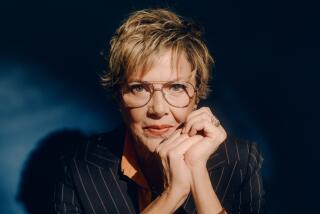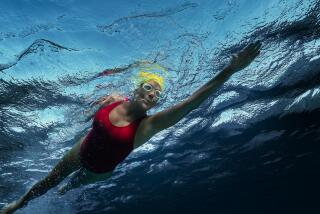SCUBA DIVING : Breathing Life Back Into a Maligned Sport
- Share via
Glenn Townsley wants to dispel the belief that the ocean is a dark, dangerous place where hungry sharks snack on innocent scuba divers.
“Diving is not dangerous as long as an individual has the proper learning, follows the do’s and don’ts and a few basic rules,” Townsley said. “It’s very safe.”
A scuba diver for 17 years, Townsley, 24, supervises the instructors at Scuba Duba Dive, a Reseda store his family has owned for 27 years. He also gives occasional private lessons to novice divers such as actor Sylvester Stallone and his wife, Brigitte Nielsen.
But no matter who the student is, Townsley always preaches the same message about diving--it’s addicting.
“I just had a beach dive off of Point Dume in water with 30-foot visibility and saw a fish I’ve never seen before that’s not in the books,” he said. “No matter how many dives you do you will always see something you haven’t seen before.
“Most people have misconceptions about diving--that it’s hard to do or you have to be an above-average swimmer. All that’s required is that you’re comfortable in the water.”
Townsley said that movies such as “Jaws” have done a “disservice” to diving, which suffered a decline in popularity after the movie’s 1975 release.
“It probably set the industry back a couple of years and sharks still are a regular concern for a lot of people,” said Townsley, who added that he has never seen a shark in more than 1,000 dives.
Townsley said that another common misconception is that scuba diving is expensive.
“Once you buy the gear, it’s just a matter of upkeep and maintenance,” he said. “I’ve been diving with the same gear for 10 years and it’s not outdated.”
Most divers are 20-50 years old, but the activity is suitable for anyone in “good physical condition and health,” Townsley said.
Diving has experienced a resurgence during the past five years because of more specialized training courses and improvements in the design, comfort and style of diving gear.
“People are realizing that diving is not just a macho man’s sport,” Townsley said. “In the past, gear was made just for men, and women had to get into men’s suits. Now there are 10 or 15 different sizes for men and women.”
Townsley’s students begin with an open-water diving course that includes five dives and 24 hours of instruction in a classroom and swimming pool for $175. Training should continue after the open-water beginning course, according to Townsley.
“The open-water class is just the tip of the iceberg,” he said. “You basically learn how to handle equipment, get in and out of the water and do things safely. It’s like driver’s education.”
Townsley recommends that students then take an advanced open-water class that includes five more dives, including night and deep-sea dives of 60 to 100 feet.
After receiving certification from the Professional Assn. of Diving Instructors, a diver has a variety of continuing education courses to choose from, including classes in underwater photography, sophisticated equipment and underwater hunting. A PADI certification also allows divers to rent scuba equipment.
“Once they try it and if they have a good instructor who shows them how fun it is, they’re hooked,” Townsley said.
Students also can join the New Wave Divers, a club that partakes in diving expeditions throughout Southern California. There are currently 130 members who take part in varied activities, including underwater pumpkin-carving contests and Easter egg hunts.
The initiation fee is $20. Additional yearly dues are $16.
Information: 818-881-4545.


